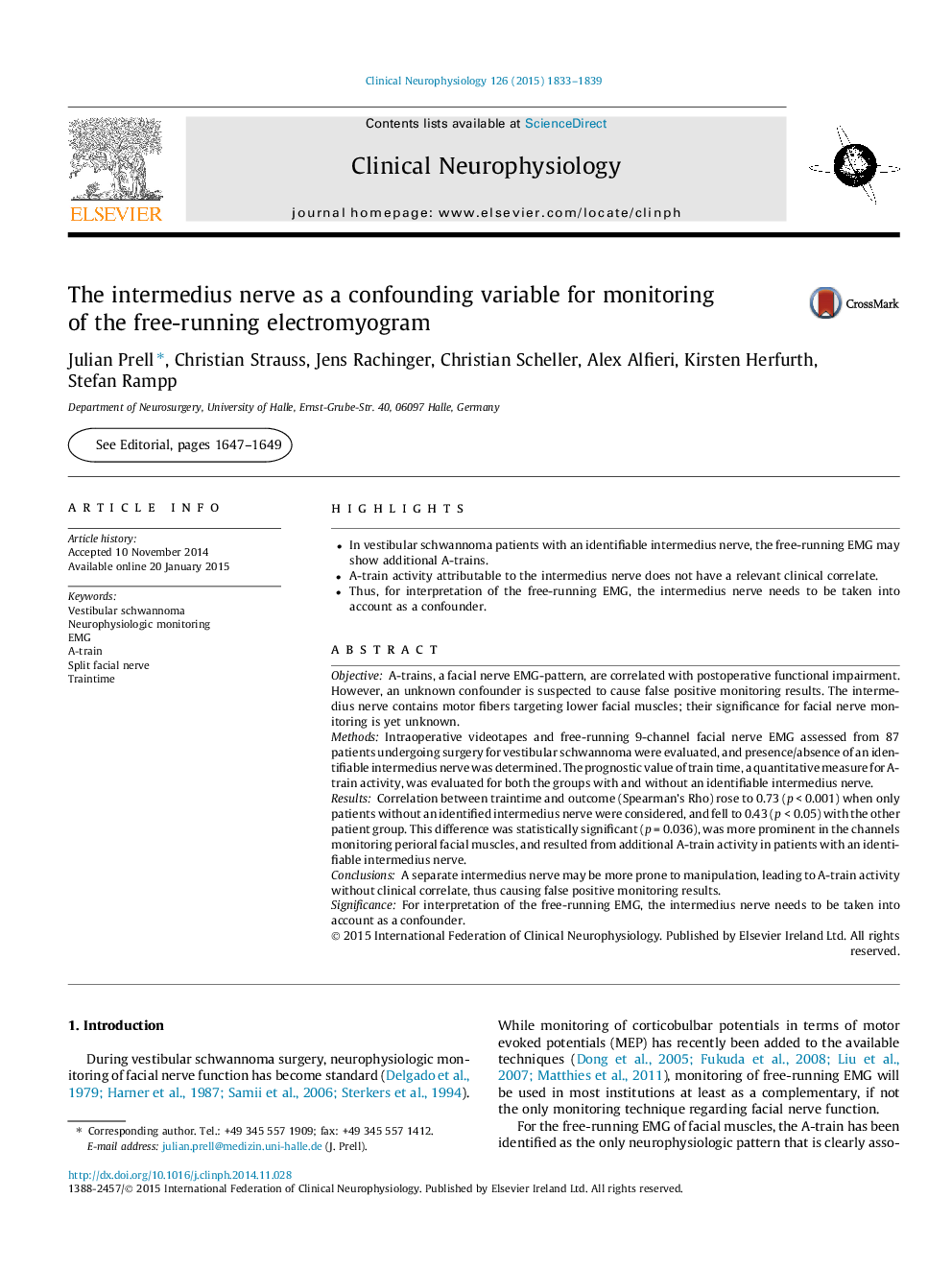| Article ID | Journal | Published Year | Pages | File Type |
|---|---|---|---|---|
| 3042835 | Clinical Neurophysiology | 2015 | 7 Pages |
•In vestibular schwannoma patients with an identifiable intermedius nerve, the free-running EMG may show additional A-trains.•A-train activity attributable to the intermedius nerve does not have a relevant clinical correlate.•Thus, for interpretation of the free-running EMG, the intermedius nerve needs to be taken into account as a confounder.
ObjectiveA-trains, a facial nerve EMG-pattern, are correlated with postoperative functional impairment. However, an unknown confounder is suspected to cause false positive monitoring results. The intermedius nerve contains motor fibers targeting lower facial muscles; their significance for facial nerve monitoring is yet unknown.MethodsIntraoperative videotapes and free-running 9-channel facial nerve EMG assessed from 87 patients undergoing surgery for vestibular schwannoma were evaluated, and presence/absence of an identifiable intermedius nerve was determined. The prognostic value of train time, a quantitative measure for A-train activity, was evaluated for both the groups with and without an identifiable intermedius nerve.ResultsCorrelation between traintime and outcome (Spearman’s Rho) rose to 0.73 (p < 0.001) when only patients without an identified intermedius nerve were considered, and fell to 0.43 (p < 0.05) with the other patient group. This difference was statistically significant (p = 0.036), was more prominent in the channels monitoring perioral facial muscles, and resulted from additional A-train activity in patients with an identifiable intermedius nerve.ConclusionsA separate intermedius nerve may be more prone to manipulation, leading to A-train activity without clinical correlate, thus causing false positive monitoring results.SignificanceFor interpretation of the free-running EMG, the intermedius nerve needs to be taken into account as a confounder.
